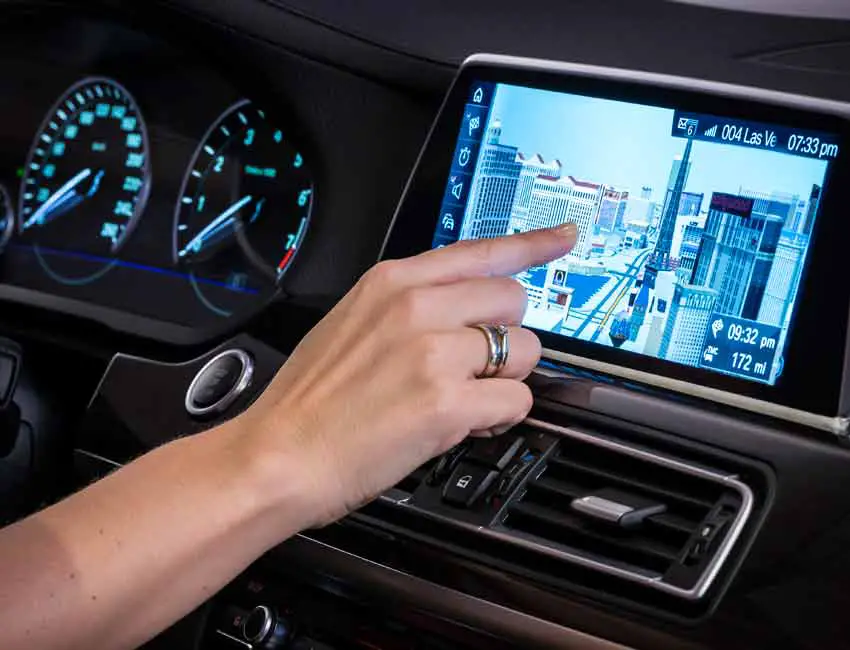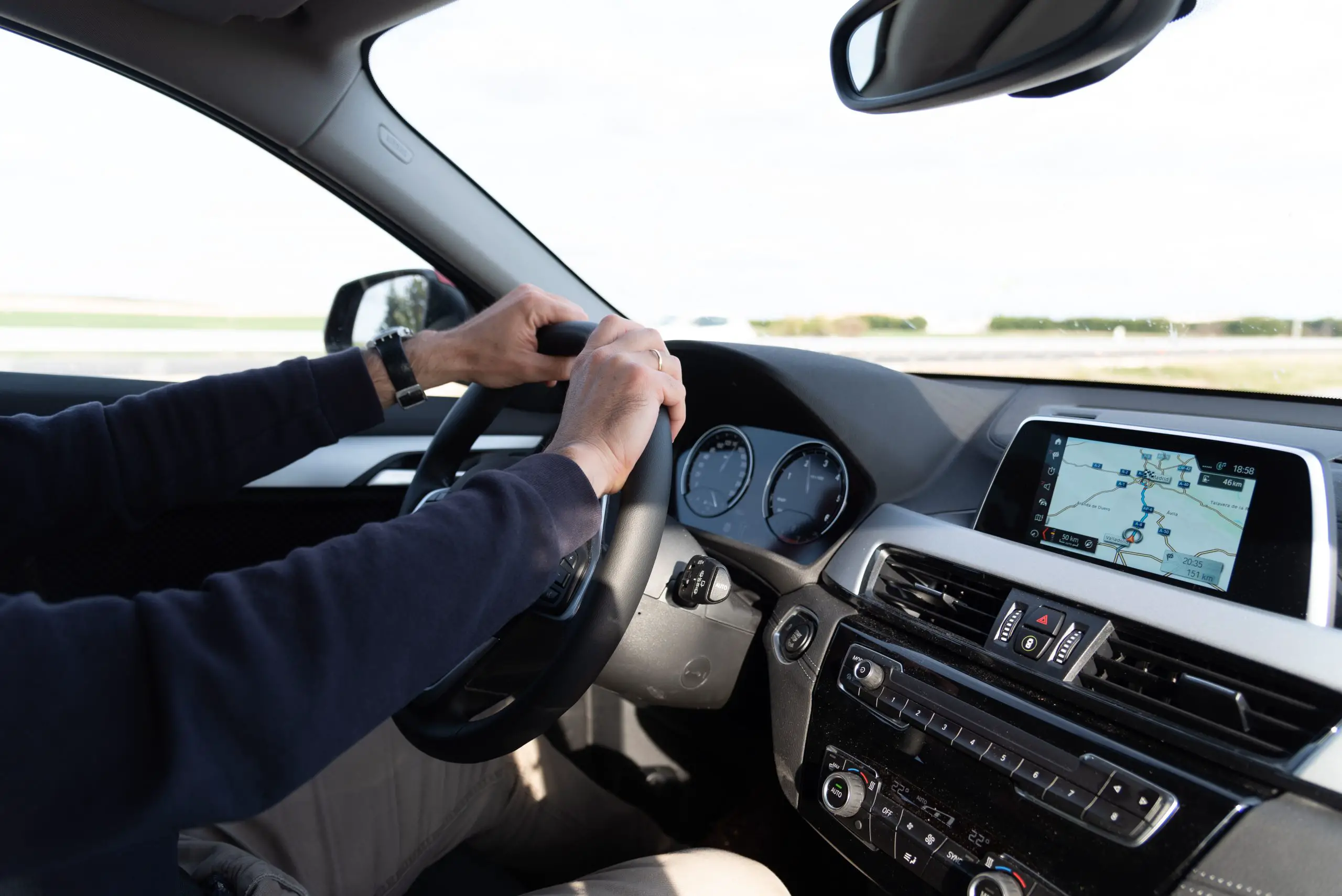BMW TPMS – Ultimate Guide
When the tires on your BMW, or any other car for that matter, are not at optimal tire pressure, it can make things pretty dangerous on the road. In the past, knowing your exact tire pressure required trips to a mechanic or some DIY devices to get your own readings.
The advent of the tire pressure monitoring system (TPMS) was a huge leap forward in terms of on-road safety. The TPMS sensor would tell you when your tires were coming to an unsafe level of pressure and prompt you to take preventative action.
The first car to use TPMS was the 1986 Porsche 959, but nowadays it has become standard in many cars, especially higher-end cars such as the BMW.

How Does BMW TPMS Work?
BMW has been offering TPMS systems in the majority of available models as standard since 2002. While the systems haven’t always been the same, the presence of TPMS is ubiquitous.
TPMS systems work by either a “direct” or “indirect” system. The direct system uses sensors within the wheels themselves. These sensors measure the air pressure and then communicate the data to the car’s computer using a radio frequency. Indirect TPMS works together with your car’s braking system and wheel speed sensors. Lower air pressure in one tire will cause that wheel to spin slower, thus triggering the speed sensor. Whether using the direct or indirect method, a tire pressure problem will trigger a dashboard light to warn you and prompt action.
BMW cars typically use direct TPMS systems, but if your car model is older, from 2002-2003, then it may use the indirect system.

Do BMW TPMS Need to be Programmed?
The short answer is yes, but it’s easy to confuse the programming with the “relearn” function. These are two key steps when either replacing or repairing TPMS sensors.
First, there’s “vehicle relearn,” this is a critical procedure that is carried out as standard when replacing the TPMS sensors. This is true whether you are using OEM parts or aftermarket parts. Using a TPMS scan tool, a technician can conduct the relearn procedure, and for OEM parts, that should be the end of the matter.
If, on the other hand, you are replacing or installing aftermarket sensors, then they will likely also need an additional programming step. This is the case for the vast majority of TPMS sensors, but not all. A product like the VDO REDI-Sensor, for example, comes pre-programmed and therefore does not need this extra step. This product type is known as a multi-application sensor.

Do New Wheels Need TPMS Sensors?
If your new BMW wheels are ready to receive the TPMS sensors, you can just transfer your existing BMW sensors to the new wheels.
The key component when looking at new wheel rims is whether or not they have the all-important valve stem to which the sensors are subsequently attached. Just about all rims will have the stem, but the question is the size.
The most common sizes for valve stem holes is 0.453 and 0.625 inches. TPMS valve stems can be larger, but it’s only usually a problem when you’re dealing with highly specialized or custom wheel rims. We’ll deal more with this problem further below, but at the very least you should know that you don’t have to always buy new sensors when you get new wheels. Old ones that are working properly can transfer.
What you should also note is that your TPMS can’t be sacrificed for the sake of a killer set of rims.

How do you Fix TPMS Malfunction?
Tire pressure monitoring systems are quite technical, but if you suspect the system is malfunctioning, there are things you can do to be sure. If you use one of the following methods and the TPMS warning refuses to go away, then it seems you have a genuine fault and you’ll need to get that checked. On the other hand, finishing one of the following could help that light to go away:
Reset the system. If like most BMW cars, the TPMS system is a direct one, then you can first try resetting the system by pushing the reset button on the dash. If you have an older BMW from 2002-2003, then you’ll either need to use a magnet or scanning tool to perform a reset, but there may also be a button you hold down in the glovebox to do a reset.
Check the battery. If the battery is running low or otherwise faulty, then that might prompt faults like lights coming on erroneously. It’s always worth checking to make sure it’s in good working order.
Inflate the tires. Inflate your tires to the correct pressure and the light should go away. If there’s a fault, it will remain.
If you perform these simple checks and the light is still illuminated, then you might have a faulty sensor or another malfunction. The way to solve it is to take it to a BMW specialist and have it looked at. Tire pressure monitoring sensors are not toys, and you can’t afford to repair them incorrectly. If you really do have the tools and the know-how, then you could technically do it yourself.

How Much Does it Cost to Replace the Tire Pressure Sensor?
The typical price for a BMW tire pressure monitoring sensor is between $50 and $100. Though it’s a fairly inexpensive piece of kit in itself, remember that your car needs 4, so it would be that cost per sensor. It’s unlikely you’d have to replace all at the same time, but some people might just to ensure all the sensors are operating at the same strength.
Low tire pressure in your BMW 3 Series, 5 Series, 7 Series — whatever you drive — turns it from a luxury car into a potential danger to yourself and others. No quality of vehicle build can withstand improper maintenance on its crucial parts. That small sensor in the tires makes a huge difference to your on-road safety. It’s worth whatever it costs.

Can I Use My Old TPMS on My New Wheels?
Broadly speaking, yes, you can, as long as the TPMS sensor on each wheel is working correctly, and the new wheels have the proper valve stems that you need to attach each sensor securely. If new wheels would prevent the safe attachment of the sensor, then it’s no good for you or your car. No wheel look is worth compromising on safety.
The BMW TPMS is among the most important safety tools that your car possesses. Vehicles that don’t have a TPMS system have to rely on a driver knowing exactly when tires are in need of attention and/or near-constant checking with special tools and other items to ensure safety isn’t being compromised.

You Might Also Be Interested In…
Can BMW Charge at Tesla?
Can BMW Charge at Tesla? As of now, BMWs can't directly charge at Tesla Supercharger stations because Tesla uses a proprietary connector. However, with the right third-party adapter, BMW owners might be able to make it work, but it's always good to double-check...
Are BMW Motorcycles Reliable? A Comprehensive Dive into the World of BMW Bikes
Are BMW Motorcycles Reliable? BMW motorcycles are renowned for their top-notch engineering and build quality, making them a reliable choice for riders around the world. Whether you're hitting the open road or tackling rugged terrains, you can count on a BMW to be a...
Can BMW Take 87 Gas? Discover the Truth Behind the Octane Debate!
Can BMW Take 87 Gas? Certainly! While a BMW can technically run on 87 octane gas, it's not the optimal choice. BMW recommends using premium fuel for most of their models to ensure the best performance and longevity of the engine. So, while it might be tempting to...
Embrace the Future with the BMW Genius Program
You know, they often say that 'knowledge is power'. Well, that's never been truer than in the case of BMW's groundbreaking initiative - The BMW Genius Program. Tailor-made for every BMW enthusiast out there, this program sheds light on the latest technological...
A Comprehensive Dive into the BMW N63: A Blend of Power, Performance, and Precision
Hey there, gearheads! Welcome to a deep dive into the fascinating world of one of the most renowned engines out there: the BMW N63. We're about to embark on an exciting journey, exploring the good, the bad, and the powerful of this engineering marvel. Are you ready...
How BMW TPMS Works: A Comprehensive Guide
When it comes to innovation and performance, BMW never falls short. But how well do you know the intricacies of your vehicle, specifically the Tire Pressure Monitoring System (TPMS)? Let's take a journey to understand how BMW TPMS works. How BMW TPMS Works So,...
Can BMW Keys Be Reprogrammed? Your Comprehensive Guide
Ah, the wonders of technology! It's in everything these days, from the appliances in our homes to the phones in our hands. And of course, it's a big part of our beloved vehicles too, particularly in prestigious brands like BMW. One feature that often leaves car...
How BMW VANOS Works: A Comprehensive Guide to Variable Valve Timing
Introduction Welcome to our comprehensive guide on the fascinating topic of how BMW VANOS works. If you've ever wondered about the inner workings of your BMW engine and how it achieves optimal performance, you're in the right place. In this article, we'll take a...
How BMW Models Work – BMW Model Names Explained
BMW, or Bayerische Motoren Werke, a name synonymous with luxury, performance, and automotive engineering, often leaves many of us scratching our heads when it comes to deciphering their model naming conventions. Do you ever wonder what these series of letters and...
Will BMW Wheels Fit Mercedes? Exploring the Compatibility Between Two Iconic Brands
When it comes to automobiles, BMW and Mercedes-Benz are two of the most renowned and prestigious brands in the world. Both manufacturers have established themselves as leaders in the industry, producing vehicles that exude luxury, performance, and style. However,...
